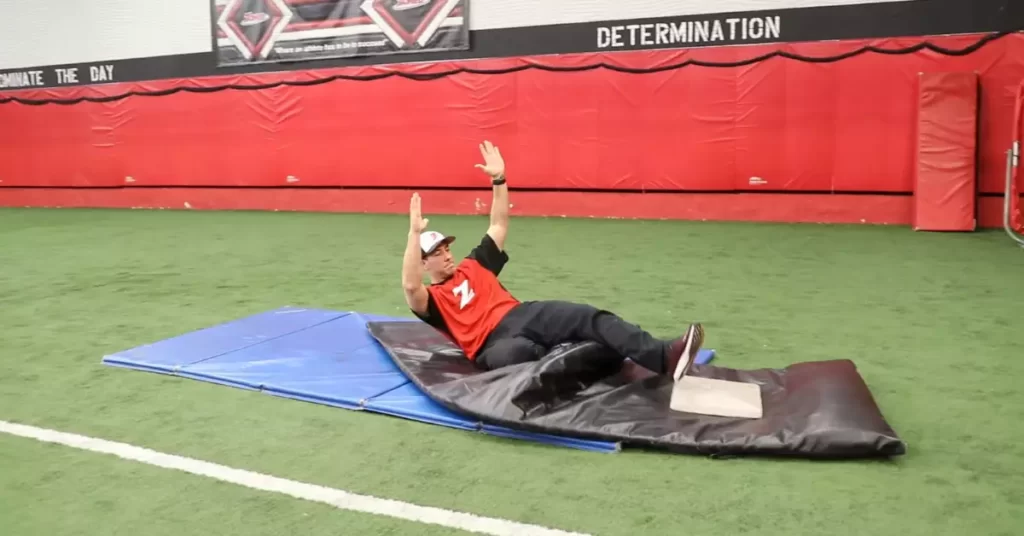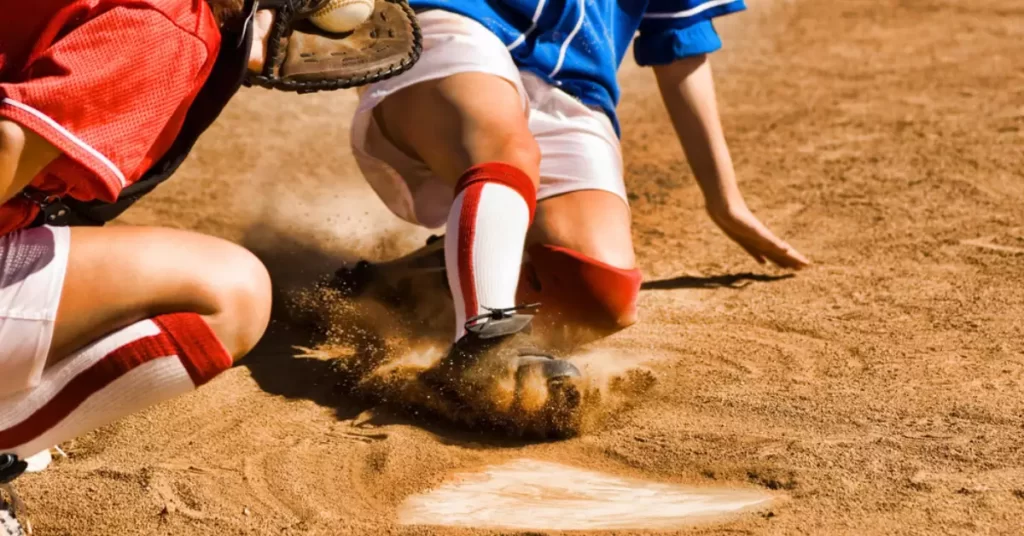Sliding is a crucial skill in softball, often overshadowed by focusing on hitting and pitching. Acquiring proficiency in sliding enables players to reach bases more effectively and with a reduced risk of injury. This fundamental component of the game warrants special consideration from both coaches and players.
Teaching sliding can be challenging, but with the right approach and techniques, it becomes a skill that can be learned quickly. To teach sliding in softball effectively, focus on three key components: proper timing, correct body positioning, and safe execution.
Are you prepared to level up your softball game? Embark on this informative journey with us as we reveal the best practices for mastering the perfect slide, transforming your on-field performance.
The Importance of Sliding in Softball
Sliding is an integral part of softball because it allows players to reach a base faster and more safely.
By mastering the sliding technique, players can avoid tags, reduce their risk of injury, and improve their overall performance on the field. As a coach or instructor, it is essential to ensure that all players learn how to slide effectively.
Breaking Down the Sliding Process
The sliding process can be broken down into several key steps:
- Approaching the Base: Players should approach the base at a controlled speed, with their eyes focused on the base and the fielder.
- Deciding to Slide: Players must make a quick decision to slide based on their position relative to the base and the fielder’s actions.
- Initiating the Slide: The player begins the slide by bending the knee of their leading leg and extending their trailing leg.
- Executing the Slide: The player uses their momentum to glide across the ground, keeping their body low and compact to minimize the chance of injury.
- Finishing the Slide: Upon reaching the base, the player should maintain contact with the base and immediately prepare to advance to the next base if necessary.

Teaching Techniques for Sliding
The Proper Equipment
Before teaching sliding, make sure players are wearing the correct protective gear, such as sliding shorts, knee pads, and cleats. This equipment will help prevent injuries and provide additional support during the learning process.
Sliding Drills
There are several drills you can use to teach sliding effectively:
- Dry Land Slides: Have players practice sliding on a soft surface, such as grass or a sliding mat, to build confidence and familiarity with the technique.
- Base Slides: Place a base on the field and have players practice sliding into it from a running start.
- Tag Slides: Incorporate fielders and have them attempt to tag the sliding player, reinforcing the importance of sliding to avoid tags.
Utilizing Visual Aids
Use videos and images of professional players executing slides to help your players visualize the proper technique. Analyze these examples together and discuss the key elements of a successful slide.
Progression-Based Learning
Start by teaching the basics of sliding and gradually increase the complexity of the drills as players become more comfortable. This progression-based approach helps players build confidence and develop their skills at a manageable pace.
- Stationary Sliding: Have players practice sliding from a stationary position, focusing on proper form and technique.
- Controlled Approach Sliding: Introduce a controlled run-up to the slide, allowing players to practice coordinating their approach with the slide execution.
- Full-Speed Sliding: Once players have mastered the previous steps, incorporate full-speed sliding drills, simulating real-game situations.

Safety Considerations
Safety is paramount when teaching sliding in softball. Here are some guidelines to follow when instructing players:
- Proper Equipment: Ensure all players are wearing appropriate protective gear.
- Teach Proper Technique: Emphasize the importance of correct form and technique to minimize the risk of injury.
- Progression-Based Learning: Gradually increase the difficulty of drills, allowing players to develop their skills safely.
- Monitor Fatigue: Avoid excessive sliding practice, as fatigue can lead to poor form and increased injury risk.
Common Sliding Mistakes
Be aware of these common sliding mistakes and address them during practice:
- Sliding Too Early or Too Late: Teach players the importance of timing their slide correctly to reach the base safely and efficiently.
- Poor Body Position: Encourage players to maintain a low, compact body position during the slide to avoid injury.
- Not Committing to the Slide: Instill confidence in players so they fully commit to the slide, reducing hesitation that can lead to poor execution and injury.
Tips for Coaching Success
- Patience: Understand that learning to slide takes time and practice. Be patient with your players as they develop their skills.
- Positive Reinforcement: Offer praise and encouragement when players demonstrate progress or execute a successful slide.
- Individual Attention: Provide one-on-one coaching to players who may be struggling with sliding techniques.
- Adaptability: Recognize that each player learns at their own pace and may require different teaching methods to grasp the sliding concept.
Practicing Sliding on Different Surfaces
It’s important to practice sliding on various surfaces, such as grass, dirt, and artificial turf, as each presents unique challenges. Encourage players to adapt their sliding technique to different field conditions, improving their overall versatility and game performance.
FAQs
When should a player decide to slide?
A player should decide to slide based on their position relative to the base, the fielder’s actions, and the likelihood of a successful slide to avoid a tag.
What is the best way to practice sliding safely?
Start by practicing on a soft surface, such as grass or a sliding mat, and ensure players are wearing proper protective gear. Gradually increase the difficulty of drills as players become more comfortable with the technique.
How can I help a player overcome their fear of sliding?
Encourage players to start with basic sliding drills and progress at their own pace. Offer positive reinforcement and provide individual attention to help them build confidence in their sliding abilities.
Final Thoughts
In our quest to improve sliding skills, we’ve covered various techniques and strategies that can significantly enhance a player’s performance on the field. By implementing these methods, coaches and players can enjoy a safer and more competitive game.
With consistent practice and dedication, anyone can master the art of sliding in softball. Now that you’re equipped with the knowledge and tools to excel, it’s time to hit the field and slide your way to victory. Embrace the challenge, and watch your game soar to new heights!
